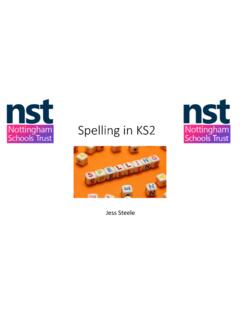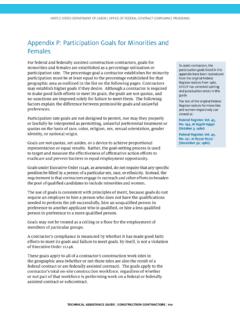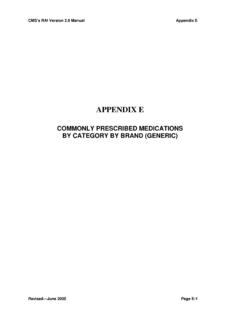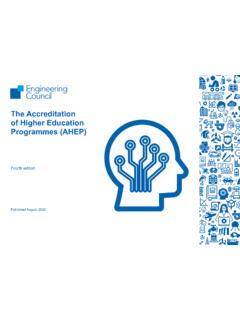Transcription of THE EFFECTS OF SYNTHETIC PHONICS TEACHING ON …
1 THE EFFECTS OF SYNTHETIC PHONICS TEACHING ON READING AND spelling ATTAINMENT A SEVEN YEAR LONGITUDINAL STUDY 2 THE EFFECTS OF SYNTHETIC PHONICS TEACHING ON READING AND spelling ATTAINMENT A SEVEN YEAR LONGITUDINAL STUDY Rhona Johnston 1 and Joyce Watson 2 1. Department of Psychology, University of Hull 2. School of Psychology, University of St Andrews The views expressed in the report are those of the author(s) and do not necessarily reflect those of the Scottish Executive or any other organisation(s) by which the author(s) is/are employed. The Scottish Executive is making this research report available on-line in order to provide access to its contents for those interested in the subject. The Executive commissioned the research but has not exercised editorial control over the report.
2 The Executive has not published this full report in hard copy, but a summary version has been published in the Insight series (ISSN 1478-6788 online) as Insight 17. Insight 17 is also available online at with a limited print run available from the Dissemination Officer, Information, Analysis & Communication Division, Scottish Executive Education Department, Victoria Quay, Edinburgh, EH6 6QQ (telephone 0131-244-0316). Both reports were published on The Scottish Executive website on 11 February 2005. 3 ACKNOWLEDGMENTS The authors would like to acknowledge the support of the SEED and Clackmannanshire Council, who do not necessarily support the views expressed in this report. They would also like to thank the children, parents and teachers who took part in this study.
3 They would particularly like to thank Lesley Robertson, Senior QIO/Adviser for the generous co-operation and help she provided throughout the years. 4 CONTENTS LIST OF TABLES IN EACH CHAPTER 5 LIST OF FIGURES IN EACH CHAPTER 7 EXECUTIVE SUMMARY 8 CHAPTER 1 INTRODUCTION 10 AIMS AND OBJECTIVES 12 CHAPTER 2 TESTS USED THROUGHOUT THE STUDY 13 VERBAL ABILITY 13 LITERACY SKILLS 13 PHONOLOGICAL SKILLS 14 SOCIAL BACKGROUND
4 QUESTIONNAIRE 15 ATTITUDES TO READING 15 DEPRIVATION INDEX 15 CHAPTER 3 PRIMARY 1 16 COMPARISON OF THE EFFECTIVENESS OF ANALYTIC AND SYNTHETIC PHONICS TEACHING 16 METHODS 16 RESULTS 17 CHAPTER 4 PRIMARY 2 TO PRIMARY 7: BOYS VERSUS GIRLS 23 WORD READING 23 spelling 24 READING COMPREHENSION 26 CHAPTER 5 PUPILS AND TEACHERS QUESTIONNAIRE RESPONSES 29 BOYS AND GIRLS ATTITUDES TO READING IN PRIMARY 7 29 TEACHERS VIEW OF THE SYNTHETIC PHONICS PROGRAMME 30 CHAPTER 6 PRIMARY 7.
5 CORRELATIONAL ANALYSES 34 DEPRIVATION INDEX, ATTITUDE TO READING AND LITERACY 34 PARENTAL FACTORS, ATTITUDE TO READING AND LITERACY 34 ATTITUDES TO READING, PARENTAL FACTORS AND LITERACY 35 CHAPTER 7 PRIMARY 2 TO PRIMARY 7: ADVANTAGED AND DISADVANTAGED CHILDREN 37 COMPARISON OF READING AND spelling ATTAINMENT 37 CHAPTER 8 PRIMARY 1 TO PRIMARY 7: UNDERACHIEVING CHILDREN 41 PROPORTION OF UNDERACHIEVING CHILDREN 41 CASE STUDY 44 5 CHAPTER 9 OVERALL SUMMARY AND DISCUSSION 66 LONG TERM EFFECTS OF LITERACY ATTAINMENT 66 COMPARISON OF BOYS VERSUS GIRLS IN LITERACY ATTAINMENT 66 ATTITUDES TO READING 67 FEEDBACK FROM TEACHERS ON THE PROGRAMME 67
6 EFFECTS OF SOCIO-ECONOMIC STATUS 68 UNDERACHIEVERS 68 CONCLUSION 69 appendix 71 PARENTAL QUESTIONNAIRE 71 ATTITUDES TO READING QUESTIONNAIRE 73 REFERENCES 76 LIST OF TABLES CHAPTER THREE Table Mean chronological age, IQ (BPVS) reading age (British Ability Scales Word Reading test) spelling age (Schonell spelling test) emergent reading (Clay rhyme skills and nonword reading (standard deviations in brackets), pre-test and first post-test, Study 2.)
7 18 Table Mean % correct on Analogy Reading Task and Irregular Word Reading at end of training programme (first post-test) Study 2 .. 20 Table Mean chronological age, mean word reading age (British Ability Scales Word Reading test) and mean spelling age at second post-test, 15 months after termination of the programme, after all groups had been introduced to SYNTHETIC PHONICS .. 21 Table Mean chronological age, mean reading comprehension age (Primary Reading Test) second post-test, 15 months after termination of the programme, after all groups had been introduced to SYNTHETIC PHONICS .
8 22 CHAPTER FOUR Table Mean word reading ages, chronological ages and word reading advantage (extent to which word reading exceeds chronological age) in years for boys (B) and girls (G), Primary 2 to Primary 7 (standard deviations in brackets) .. 24 Table Mean word spelling ages, chronological ages and spelling advantage (extent to which spelling exceeds chronological age) in years for boys (B) and girls (G), Primary 2 to Primary 7 (standard deviations in brackets) .. 25 Table Mean reading comprehension ages, chronological ages and reading comprehension advantage (extent to which word reading exceeds chronological age) in years for boys (B) and girls (G)Primary 2 to Primary 7 (standard deviations in brackets).
9 27 6 CHAPTER FIVE Table Primary 7 ATR 2 Attitudes to Reading Questionnaire, mean score (standard deviations in brackets .. 29 CHAPTER EIGHT Table Number of pupils in Primary 2 more than 1 and 2 years behind chronological age in word reading, spelling and reading comprehension (percent in brackets) 41 Table Number of pupils in Primary 3 more than 1 and 2 years behind chronological age in word reading,. spelling and reading comprehension, percent in brackets) 42 Table Number of pupils in Primary 4 more than 1 and 2 years behind chronological age in word reading, spelling and reading comprehension, percent in brackets 42 Table Number of pupils in Primary 5 more than 1 and 2 years behind chronological age in word reading, spelling and reading comprehension, percent in brackets 43 Table Number of pupils in Primary 6 more than 1 and 2 years behind chronological age in word reading, spelling and reading comprehension, percent in brackets comprehension, per cent in brackets.
10 43 Table Number of pupils in Primary 7 more than 1 and 2 years behind chronological age in word reading, spelling and reading comprehension, percent in brackets 44 Table AF s pre and post test scores compared with scores of the analytic PHONICS + phonemic awareness research group (AP+PA) in September of Term 1 (pretest) and March of Term 2 of Primary 1 (post-test) 1997/98.. 46 Table AF s scores compared with the scores of the analytic PHONICS + phonemic awareness group (AP+PA) in June of Term 3 of Primary 2 (1999) alongside AF s post-test scores in Primary 1 Term 2 for comparison.

















